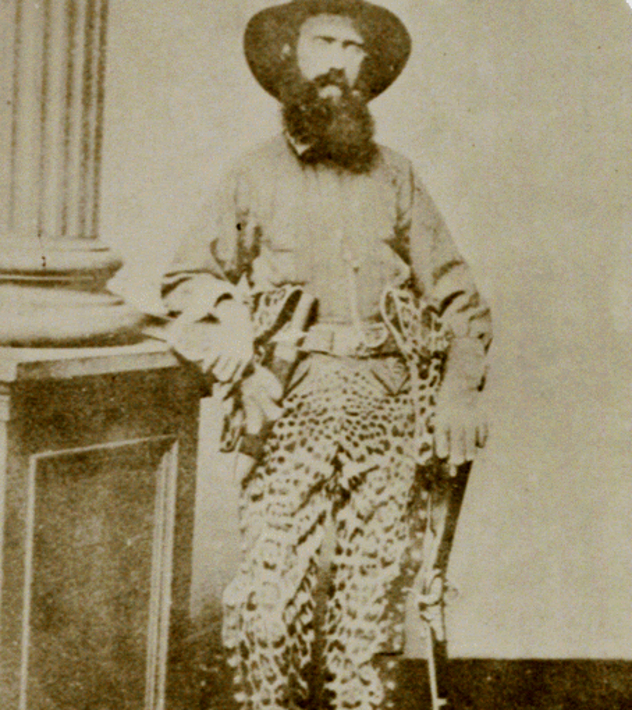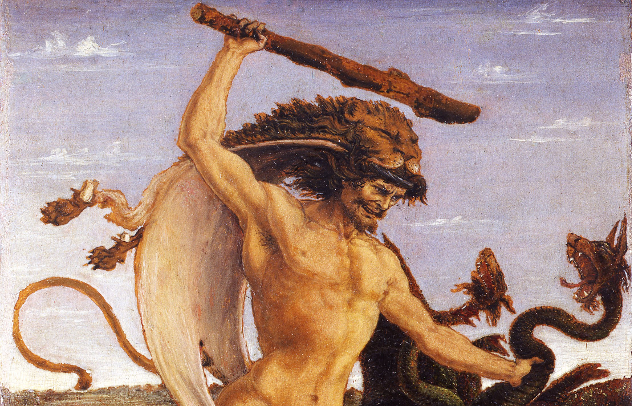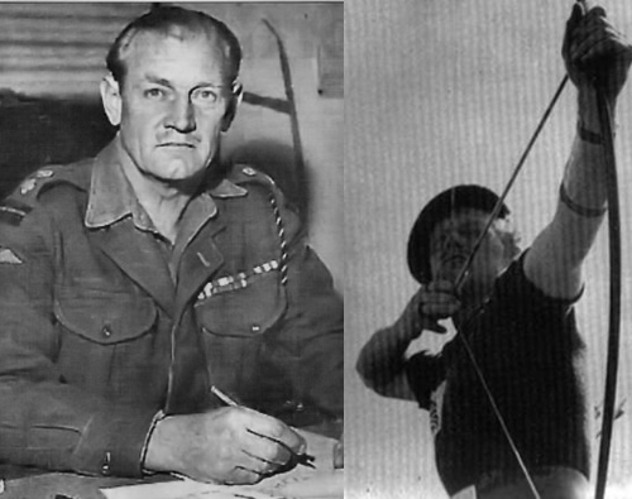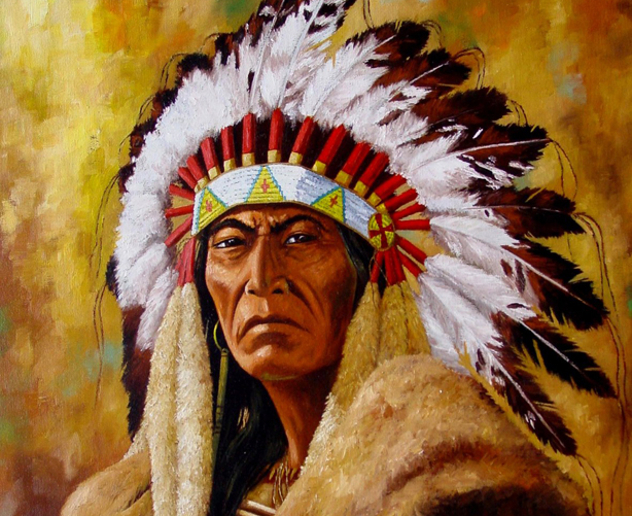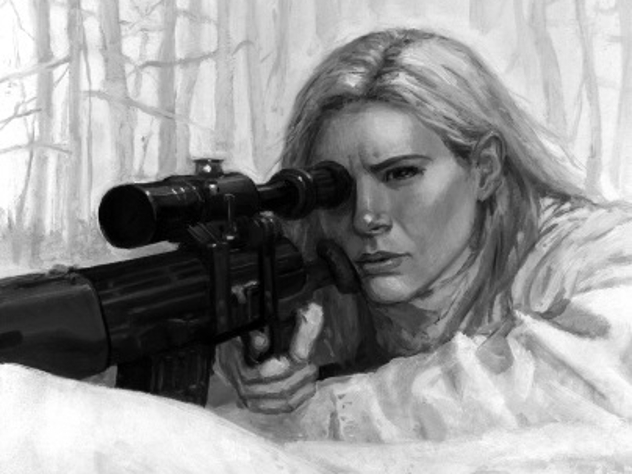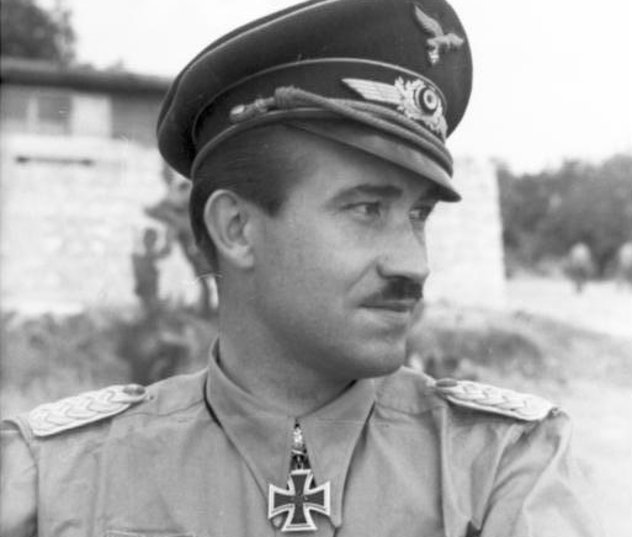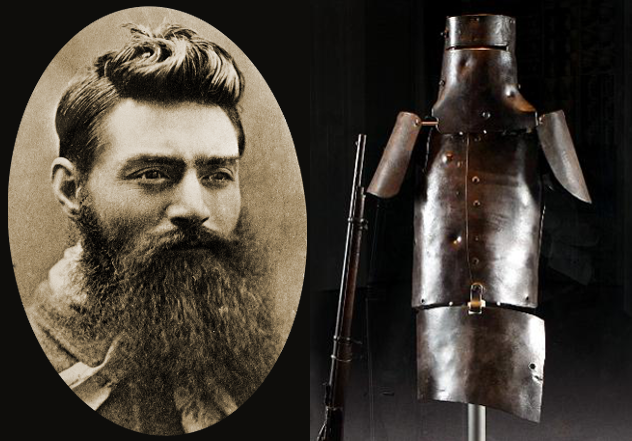10 Captain Richardson And His Jaguar Pants
Captain Samuel J. Richardson fought for the Confederacy during the American Civil War. We’d like to go into more detail about what exactly Richardson got up to during the war, but his pants have rather eclipsed the rest of his exploits. All we know for sure is that he led a volunteer company of soldiers called the W.P. Lane Rangers. Captain Richardson rode into battle wearing a pair of jaguar-hide pants, with a set of matching holsters, presumably made from either the same jaguar’s cubs or another, smaller jaguar. Though it’s commonly accepted that the pants are indeed genuine jaguar hide, it’s not known how Richardson came to own them. The best guess of historians is that they were hunted and killed somewhere near Texas. Whether Richardson hunted them personally or they just leaped onto his legs out of fear isn’t clear, but we’re going with the latter.
9 Milo Of Kroton And His Lion-Skin Robe
Milo of Kroton (sometimes written as Croton) is regarded as one of the finest wrestlers to have ever lived. Throughout his life, he won five different Olympic championships and was so feared in the ring that one of the few people to ever best him in wrestling did so by running in a circle until he collapsed of exhaustion. Milo was famed throughout the ancient world for his size and strength, and there are various stories from his time suggesting that he could carry a fully grown bull. However, we’re not here to talk about Milo’s wrestling days: We’re here to talk about the time his hometown, Kroton, was ransacked by a neighboring town. While the rest of his town dashed to grab weapons and armor to defend themselves from the intruders, Milo donned all of his Olympic crowns at once, draped a lion skin across his naked body and picked up a wooden club, which he then used to beat the invading soldiers to death. It’s commonly accepted that Milo did this to fool the enemies into thinking he was Hercules (pictured), who also ran naked into battle wearing a lion-skin robe. The only difference was that Hercules was a demigod, whereas Milo was just a really buff guy who liked wrestling.
8 Jack Churchill, The Kilt-Wearing Nazi-Killer
Jack Churchill (no relation to Winston), better known as “Mad Jack,” was a soldier who fought during World War II, famed for being the only soldier in the entire war who went into battle wielding a sword and a longbow—which he actually killed a few German officers with, making him the last person in recorded military history to kill an enemy with such a weapon. If the image of a World War II–era soldier running into battle swinging around a claymore wasn’t cool enough, Churchill was also famous for doing so while wearing a kilt and playing bagpipes, both to confuse the enemy and rally his men. His enemies, remember, were armed with machine guns and tanks. When Churchill became a commando, tasked with raiding factories in Norway in 1941, he upped the ante even further by adding to his battle dress of sword, bagpipes, and longbow some striking solid silver buttons he’d somehow gotten hold of.
7 Honda Tadakatsu, Samurai And Antler Aficionado
Honda Tadakatsu is known as one of the “Four Heavenly Kings of the Tokugawa,” a group of generals famous throughout Japan for their military and battlefield prowess. Tadakatsu himself was regarded as one of the finest warriors in Japan at the time, reportedly never once being injured in battle. This is especially impressive when you realize that Tadakatsu was very easy to spot on the battlefield, due to his habit of wearing a kabuto with a comically huge set of papier-mache deer antlers attached to the top of them, supposedly so that his own men, and more importantly, the enemy would always be able to find him if they wanted some. The weird part is, helmets like Tadakatsu’s weren’t actually that uncommon on the battlefields of Japan. So-called “Kawari Kabutos” were a popular choice for samurai warriors who wished to stand out on the battlefield, and they were generally characterized by hugely impractical ornaments balanced precariously on top of them, like Tadakatsu’s antlers. Perhaps the most extreme example is this helmet belonging to an unknown samurai from the 17th or 18th century, which sports a several-foot-high metal “catfish tail,” or mohawk.
6 Roman Nose And His Oversized War Bonnet
Roman Nose was a Native American warrior revered by tribes across early America as a powerful and cunning warrior. He believed that his power came from an impractically huge, feather-covered war bonnet that he would wear in every battle. The war bonnet was far more elaborate than most of the time, and Roman Nose claimed it was magical, supposedly making him untouchable in combat as long as he upheld a number of superstitions, including not shaking hands with someone and not eating any food prepared with iron. He rode a horse with lightning bolts painted across it. The war bonnet itself was a glorious sight to behold and was adorned with a bounty of feathers and even a buffalo horn. It was created by the medicine man White Bull, who made it at the bequest of Thunder itself. One of his favored tactics in battle was to ride in front of soldiers on his horse, forcing them to waste bullets trying to shoot at him. Which everyone obviously did, because the sheer extravagance and size of the war bonnet made him an immediate target. Amazingly, Roman Nose was never injured while doing this. In fact, when Roman Nose later died in battle while wearing his giant magic hat, it was rumored by his people that the only reason he’d been killed was because he’d accidentally eaten food prepared with an iron pan prior to the battle and was unable to perform a proper cleansing ritual in time. It’s believed Roman Nose was then shamed into entering the fray by an elder who saw him standing on the outskirts of combat looking menacing.
5 The White Tights, Legendary Female Snipers
The White Tights are supposedly group of (all female) snipers who have been stalking the battlefields of Eastern Europe since the 1980s. Though the group is largely regarded as an urban myth, the Russian authorities insist they exist. Every now and again, stories will pop up that are oddly reminiscent of the legend. The legend states that the White Tights are an exclusively female group of elite snipers who fought for Chechnya during the first and second Chechen War. Some versions of the tale claim the women were of Chechen descent, while others say they were mercenaries of Baltic or Ukrainian origins. One fact that is consistent across all versions of the legend is that the women are incredibly beautiful and clad head to toe in sparkling white snow suits. As noted above, the Russian military continues to assert the existence of the White Tights, despite the fact that they are almost certainly not real. For example, in a terse note from Russian authorities to Estonian officials in 2000, the official Russian stance on the White Tights was: “They exist. Military intelligence says so, and they don’t make mistakes.” Make of that what you will.
4 Adolf Galland And His Swimming Trunks
Adolf Galland was a German pilot who served with the Luftwaffe during World War II. He is well known by military buffs as one of the finest aces in the sky at the time, though he should be known as one of the most fabulous. You see, Galland was famous among his men for his incredibly unorthodox style while piloting his plane. He always flew with a cigar clenched between his teeth, which on its own is not that unusual, until you pair it with the fact that in hot weather he also refused to pilot his plane unless he was wearing a pair of swimming trunks. Because Galland understood the need to both look and feel cool. Galland’s personal planes (for example, the Heinkel He 51 he flew during the Spanish Civil War) were usually decorated with a picture of Mickey Mouse holding an axe. Yes, we’re still talking about a German pilot here.
3 Ned Kelly’s Ploughshare Armor
Unlike everyone else on this list, Ned Kelly wasn’t a trained soldier or career mercenary, he was just a criminal (and folk hero) who built a suit of steampunk battle armor so that the police couldn’t shoot him in the face—truly a dream we can all get behind. Kelly’s tale takes place in the small Australian town of Glenrowan, where he and three members of his gang fled in the winter of 1880. They had recently murdered Aaron Sherritt, a supposed traitor to their gang. The police, who knew where Kelly was located, were keen to make Glenrowan the last place the Kelly Gang would terrorize. They closed in, surrounding the Anne Jones Hotel where the gang was holed up. Having planned ahead, Kelly and his men were each equipped with a set of plate armor, made from pieces of farm equipment. The suits, which made the men effectively bulletproof, turned what should have been an execution into one of the most famous last stands in criminal history. The armor was so effective that Kelly was able to brush off point-blank shots to the chest, and when the armor was later investigated, it was discovered that Kelly had been hit in the face several times. However, the one part of his body the armor didn’t protect was his legs, and the police used this to their advantage by crippling the outlaw with a few well-placed shots to the thighs and groin. His men were killed in the fight. Kelly survived but was hanged a few days later. Today Kelly’s armor sits in the State Library of Victoria, serving as a permanent testament to the ingenuity of a cornered man with nothing to lose and only glory to gain.
2 The Mysterious Lion Armor
The Lion Armor is the name given to one of the most spectacular suits of armor currently housed in the Royal Armory in Leeds, England. The armor, which is regarded as one of the finest pieces in the museum’s entire collection, sports an intricate lion theme and gold detailing. Curiously, who made the armor, and who wore it, is entirely unknown. The lion is the symbol of England, which doesn’t narrow it down much. This is made all the more odd when you realize that the armor has appeared in a number of paintings since the 17th century, being worn by kings and noblemen alike. What we do know is that it was almost certainly worn in combat, due to the fact it sports many nicks and grazes, particularly to the helmet. This means that at one point in history, a guy walked into battle wearing gold armor covered in tiny lions worth more than a small country.
1 Carlos Hathcock And The White Feather
Compared to having a set of deer antlers welded to your head, or wearing half a jaguar around your waist, Carlos Hathcock simply tucking a single white feather into his hat as he walked into battle probably seems a little tame—until we inform you that Carlos Hathcock was a sniper. His job literally required him to be as hard to spot as possible, and he still chose to tuck a white feather into his hat. Hathcock is known as one of the best snipers in US military history—so good that he was the sniper they called in to shoot other snipers during the Vietnam War. Despite often being asked to go up against men who’d spent their adult lives learning to spot anything out of the ordinary and shoot it, Hathcock still insisted on wearing the easy-to-spot feather while he was doing it. Perhaps the most amazing part of this entire story is that the enemy knew all about the feather. When Hathcock started taking down Vietnamese snipers like poorly hung paintings, they actually sent counter-snipers into the jungle just to kill him. When Hathcock’s men heard about this, they all started wearing feathers in their hats too, effectively drawing a bullseye on their backs, just so that the enemy couldn’t recognize him. Literally the only thing the Vietnamese knew about Hathcock, other than that he was a crack shot, was that was he always wore a white feather in his hat. In other words, Hathcock was so fabulous, he actually inspired a fashion trend during active combat. How’s that for a legacy? Karl has a Twitter account and a Tumblr account, if you’re into that sort of thing.
